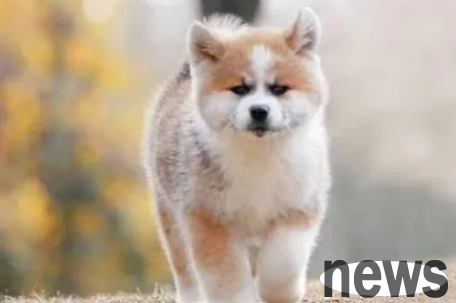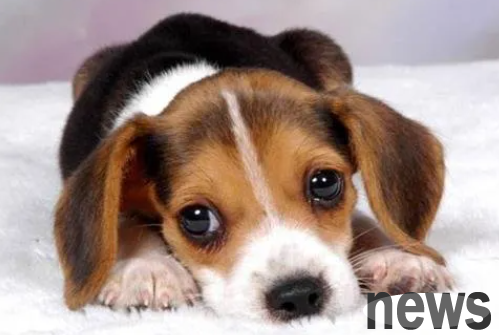1. Teeth
Dog's teeth are not only used to chew food, but also serve as weapons for self-defense and offensive. Generally, adult dogs have 42 teeth, 20 upper jaws and 22 lower jaws.
The most important thing to observe a dog's teeth is to pay attention to whether it is well occluded, especially whether the upper and lower jaw incisors are closely interlocked. However, some breeds of dogs such as boxer dogs, bulldogs, Japanese and Beijing dogs have a protruding forward than their jaws, which is exactly the opposite when biting.

When checking a dog's teeth, its mouth should be opened as wide as possible so that all teeth can be seen. Then, let him close his mouth and turn his lips up to see how his bite is. The color of the dog's teeth shows whether the dog is sick. If the tooth ribbon is yellow, it means that the dog has been sick for a long time and is extremely weak in physique.
2. Nose
The nose of a dog is better for black, with flesh-colored or brown spots. Generally, dogs have a sharp tip that is protruding to the mouth, but the nose shape of Japanese squid, trumpet dog, Beijing dog, etc. is naturally unique, with the tip of the nose facing backward and the nostrils facing upward.
3. Most breeds of dogs with straight backs are the best, and carp backs and concave backs are inferior. The so-called carp back means that the back is bulging upward like the back of a carp; the so-called concave back means that the back is sagging. Regarding carp backs, some breeds of dogs are exceptions, such as Russian shepherds, who are born with carp backs. As for the concave back, it can only mean that such a dog is wrong.
4. The front legs of the dog support most of the weight of the whole body. It is ideal for those with straight and developed people. There are three types of front legs with poor angles:
Inner foot shape: From the front, the inner side of the legs forms an inwardly curved arc.
French type: Just opposite to the inner foot type, the legs are bent outwards on the inner side, forming the outer eight characters.
Bulldog type: The span of the two front legs is larger than the shoulders, the center of gravity is downward, and it feels bulky.

5. The hind legs of the dog are mainly used to generate thrust when running. It is best to have developed muscles and strong knee joint expansion and contraction. From the back, the two hind legs should be straight and parallel, so that they are the most powerful. There are four types of unsatisfactory hind legs:
outward opening type: The distance between the legs is greater than the normal distance.
Inner clamp type: exactly opposite to the outer open type, the distance between the legs is smaller than the normal distance.
O-shaped shape: Similar to the inner foot shape of the front legs, the inner side of the legs is bent inward to form an arc shape.
Dog O-Legging
X-Flag: Similar to the French-Flag of the front legs, the inner side of the legs is curved outward, the two joints are close and the legs are opened, a bit like the letter X. This is a typical ox hind legs shape, so it is also called a ox leg shape.
6. Toes
The toes of dogs are roughly the following:
Cat type: Small and round ones are the most ideal.
Rabbit type: The shape is like the toes of a rabbit, which is the most ideal toe shape. For example, famous dogs such as Japanese gods, all have rabbit-shaped toes.
Branch type: The crack between the toes is too big, which is not only unsightly, but the street owner will get stuck in mud and sand when walking. Paper type: The toes are as thin as paper, which is the worst foot type. Due to poor development of claw tips, it will affect the speed and endurance of running.
7. Tails
The tail of a dog varies depending on its breed, and there are roughly the following types:
Hook tail: The tail end is raised up like a crochet, and a large Danish dog will have such a tail. Sword-shaped tail: A typical wolfdog tail, characterized by long and sagging.
Collection: The whole tail is rolled up and down, such as the tail of Japanese pointed-mouthed dogs, Chinese pugs, etc. The end of the roll can also be divided into left and right rolls, drum rolls and double rolls according to the angle and degree of rolls on it.
Spiral tail: Generally very short, shrinking into a spiral shape. A trumpet dog has such a tail, but it is often cut off.
Scythe tail: It is not as curled as the tail, but only in a sickle-shaped shape. Japanese-made small and medium-sized dogs have this tail.
Horizontal tail: The tail extends backward like a bamboo pole and is parallel to the body. For example, the German beagle (or dachshund)
8, ears
The dog has many ear shapes, and in terms of the direction of the ear, it can be roughly divided into four types, namely erect ears, semi-rect ears, undulating ears and rose ears.
